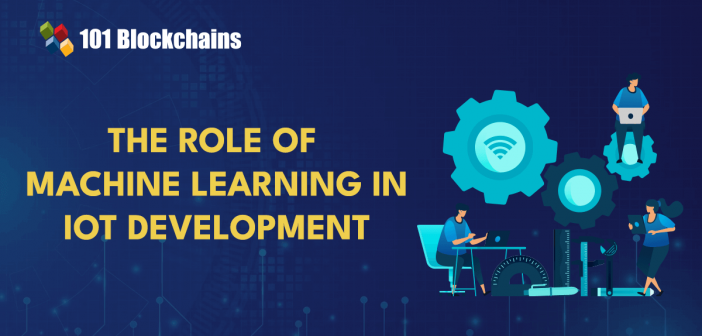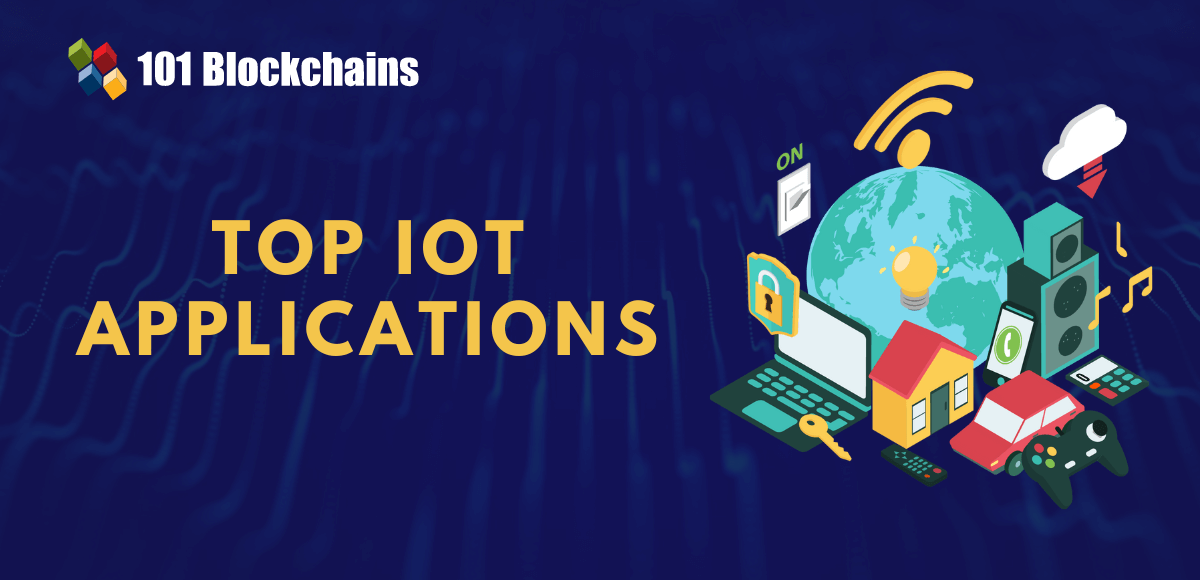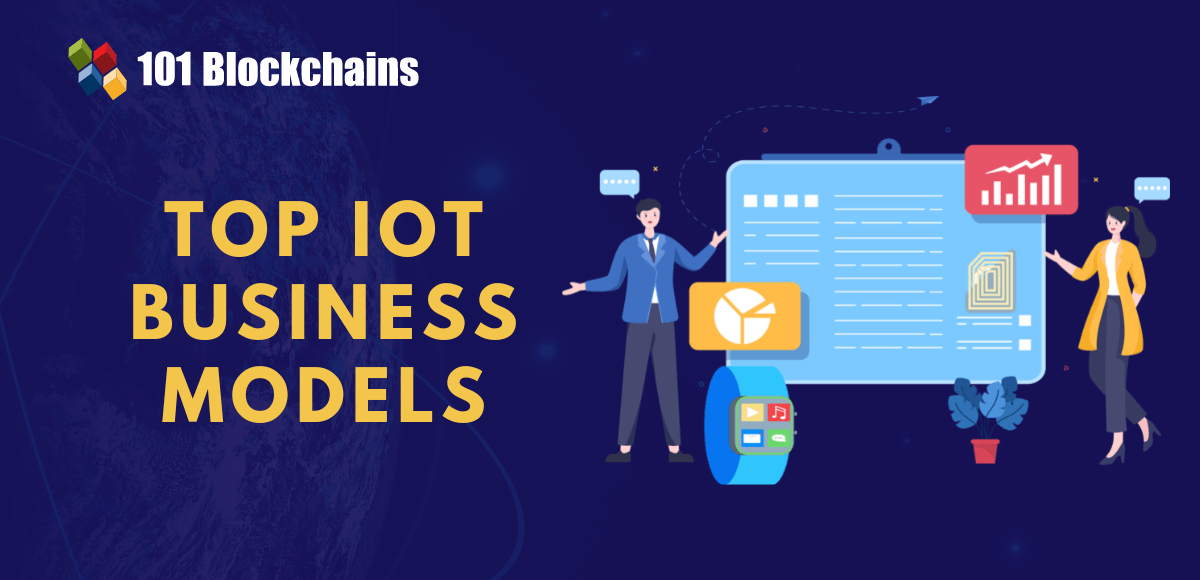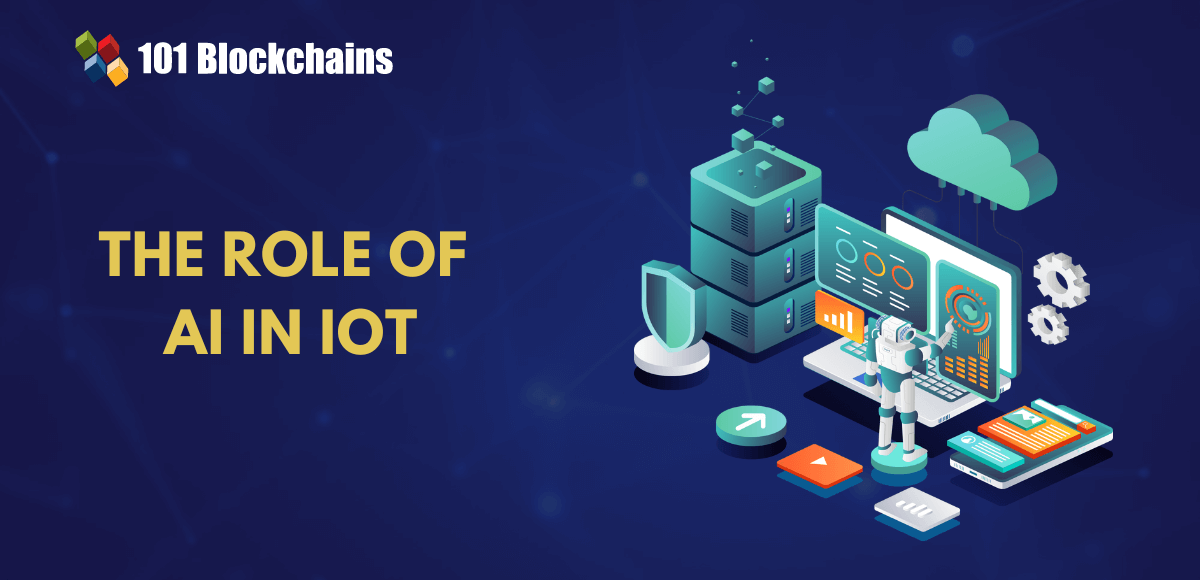Learn how blockchain truly works, master key definitions, and uncover what makes smart contracts so "smart." Dive into the fundamentals, gain valuable insights, and start your blockchain journey today!

- IoT
Georgia Weston
- on March 07, 2024
Understanding the Role of Machine Learning in IoT Development
Internet of Things or IoT and machine learning have become notable buzzwords in the domain of technology. As the excitement around machine learning and IoT gains momentum, it is important to think of ML in IoT development and the possibilities for improving IoT systems. However, you must understand the potential of both technologies before you find how to use them together.
IoT points to any linked device that can stream data all over the internet through physical devices. Machine learning is a subdomain of AI and relies on the use of algorithms for simulating human intelligence. IoT devices generate a significant volume of data from millions of devices worldwide that can leverage machine learning algorithms for drawing predictions about future events and behavior. Let us discover more information about the relationship between IoT and ML.
What is Machine Learning?
The first thing you need to understand before exploring the importance of ML in IoT development is the definition of machine learning. You must know that the universe works in unprecedented ways and does not work according to a predefined algorithm. If the universe worked like that, anyone could have predicted the future.
Machine learning helps in predicting the most likely scenarios on the basis of algorithms and statistics. It utilizes large collections of data to generate insightful information that can help draw predictions about future events. ML can offer multiple advantages, such as enhancing customer experiences, streamlining procedures, developing new business models, and reducing expenses.
One of the examples of understanding how ML works is evident in how you avoid a dark alley at night. It is not confirmed that you would be robbed if you walked into the alley. However, the experiences of other people or your own might discourage you from entering the alley.
The applications of machine learning in IoT can be based on the use of ML algorithms for using historical data to draw predictions. In the example of the dark alley, you would notice that ML algorithms receive information about incidents with people in dark alleys and make recommendations on the basis of the recorded information. The ability to process massive volumes of data can help in forecasting the likely events that would happen in a new circumstance.
Machine learning algorithms can learn from a massive volume of data and receive new data for making predictions. Depending on the correctness of the prediction, the algorithm would update the knowledge base and improve over the course of time.
Excited to learn the fundamentals of AI applications in business? Enroll now in the AI For Business Course
Understanding the Fundamentals of Internet of Things
If you want to find answers to ‘What is the role of ML in IoT?’ then you must have a clear impression of how Internet of Things works. Internet of Things points to the network of physical things with sensors, software, and other technologies for linking with each other. The devices can also exchange data with other devices in the IoT network and systems all across the internet. An IoT device could be anything, including a refrigerator or a security camera in your home. The IoT devices share data over a network by utilizing data transfer protocols once they are connected to the internet.
Engineers can design IoT devices for transferring data to different locations. The data in IoT devices is transferred to a centralized server periodically and then routed to the private server or to other IoT devices in the network. The working of IoT devices revolves primarily around their ability to transmit data to other devices on the internet.
Want to understand the fundamentals of the Internet of Things (IoT)? Enroll now in the IoT Fundamentals Course!
How Can IoT and ML Work in Unison?
The best way to learn more about the machine learning IoT interplay is a detailed overview of the ways in which ML and IoT can work together. The fundamental concepts of machine learning and IoT show that ML works by taking historical data and learning from it. On the other hand, IoT helps in transmission of data throughout the internet. The basic working of ML and IoT shows that both of them can work with each other. Data is the common point between ML and IoT, as IoT devices can transfer data to a database, and machine learning algorithms can use the data to learn new things.
Over the course of time, discussions about the use of machine learning in IoT development have been gaining momentum. Machine learning algorithms can become more intelligent with the growing volume of data streamed from IoT devices. The ML algorithm can also offer instructions to IoT devices when the devices can communicate with the environment like different IoT devices.
The loop would help the ML algorithm receive data from IoT devices and improve their instructions for the devices. Subsequently, the IoT devices can work according to the instructions and carry out the necessary tasks alongside providing ML algorithms with a continuous flow of data. The repeated use of the feedback loop ensures that you can achieve some exciting and innovative outcomes with IoT devices.
Want to familiarize yourself with the technology stack associated with IoT? Enroll now in the IoT Intermediate Level Course
What is the Reason for Using Machine Learning with IoT?
Machine learning is an ideal pick for improving IoT systems and networks worldwide. The review of machine learning role in IoT draws attention to two distinct reasons. The first factor focuses on the quantity of data and possibilities for automation, while the second factor focuses prominently on predictive analytics.
-
Data Analysis Automation
The foremost feature that connects ML and IoT is the assurance of data analysis automaton with machine learning. You can take the example of sensors in automobiles to learn about the impact of ML on data analysis automation. The sensors in a moving automobile capture thousands of data points. ML algorithms process the data points in real-time to avoid accidents and traffic and ensure passenger comfort.
It is important to rely on ML algorithms for automation because human analysts cannot complete real-time processing of data points for every car running on the road. The use of ML in IoT development focuses on the features of machine learning for offering data analysis automation. Machine learning enables vehicles to learn about notable hazardous conditions on the road. It can help in identifying friction and speed factors that could endanger the driver and ensure activation of safety systems.
-
Predictive Analytics
Machine learning also provides another notable advantage of predictive analytics that can help in combining ML with IoT. The ability of machine learning to identify unusual patterns and anomalies and raise red flags makes it useful for IoT development. The importance of ML in IoT development also points to the effectiveness and accuracy of identifying unexpected behavior. One of the notable examples of predictive analytics with machine learning is the experiment by Google to reduce energy consumption in HVAC systems.
Machine learning models can be developed for predicting future outcomes with accuracy by pointing out the causes of specific outcomes. It can offer the opportunity for manipulation of inputs and management of results.
Expand your knowledge of IoT with comprehensive IoT Flashcards.
How Can You Implement Machine Learning in IoT?
The reasons for using machine learning in IoT showcase clearly how you can connect the two technologies. At the same time, it is important to understand how you can use ML for improvements in IoT development. Here are some of the ways in which machine learning can improve IoT development workflows.
-
Cost Reduction
One of the foremost reasons for using ML for Internet of Things is the assurance of cost reduction for industrial operations. Predictive skills offer an effective solution in industrial environments that use IoT devices. Machine learning can help IoT devices understand the general conditions of the device and identify the anomalies that emerge with the device.
ML algorithms can provide predictions by extracting data from special sensors or technologies in industrial IoT devices. It is important to determine the situation in which an industrial IoT device needs protection. As a result, you can save money from the costs of repairs and maintenance. Businesses can use machine learning for IoT and achieve more than 90% accuracy for industrial IoT development. Machine learning can also offer cost savings in the maintenance of industrial IoT devices.
-
Real-time Decisions
The advantages of machine learning for Internet of Things focus primarily on achieving real-time decisions. Organizations use IoT devices with integration of machine learning algorithms for making real-time decisions based on data. The best thing about machine learning role in IoT revolves around lack of any manual intervention.
For example, ML algorithms and IoT devices can work together in the domain of agriculture for increasing irrigation and optimizing the consumption of fertilizers. As a result, data-driven decisions can help in lowering waste alongside increasing crop yields.
-
Better Data Analysis
The responses to ‘What is the role of ML in IoT?’ would draw attention towards improved data analysis. Machine learning algorithms offer the advantage of effective analysis of IoT device data. It can help generate insightful data that could serve as a major tool for decision-making.
Machine learning and IoT can help improve business productivity by supporting predictive maintenance. The benefits of predictive maintenance can help in saving money and lowering downtime through prediction of equipment failure before it actually happens.
Enroll now in the Ethics Of Artificial Intelligence (AI) Course and familiarize yourself with the important considerations and future directions for policy and regulations regarding ethical AI.
What are the Use Cases of Machine Learning and IoT Combined Together?
Machine learning plays a vital role in transforming the IoT landscape with promising value benefits. The best way to learn about the significance of machine learning in IoT development involves a review of the practical use cases of machine learning for Internet of Things networks. Machine learning helps in improving intelligence of IoT devices through analysis of data produced by numerous IoT devices.
Some of the notable sectors in which the use cases of ML and IoT have been increasing are agriculture, healthcare, smart home automation, industrial automation, and self-driving vehicles. Here is an overview of the different ways in which machine learning improves IoT applications in various sectors.
-
Agriculture
Over the next few years, the agriculture deficit would increase by huge margins. The increasing demand for food would require the adoption of ML and IoT together. The machine learning-IoT combination could offer exclusive benefits for agriculture by using technologies such as precision farming, AI-powered pest control, and crop monitoring. Precision farming tools use satellite data to optimize the use of fertilizers, and AI-powered pest control uses IoT sensors with machine learning for personalized treatment of pests and other potential conditions.
-
Healthcare
The best use of IoT devices in healthcare points to the wearables that can monitor human body motion data and heart rate. You can use ML in IoT development for healthcare by embedding ML algorithms in wearables. Machine learning can utilize data regarding metrics from the wearables and provide an accurate representation of health conditions alongside recommendations for avoiding risks in the cardiovascular system.
-
Smart Homes
The examples of applications of machine learning and Internet of Things in combination with each other also include smart homes. Modern homes use IoT devices in different ways, like smart speakers that help control thermostats, lights, and garage doors. The significance of machine learning role in IoT for smart homes can focus on the assurance of autonomy in homes. For example, smart home equipment with IoT sensors can use beacon technology to determine whether you are present at home. Ultimately, your home would interact with you by leveraging machine learning for effective processing of data points from IoT devices.
Start learning Blockchain IoT with World’s first IoT (Internet Of Things) Skill Path with quality resources tailored by industry experts Now!
Bottom Line
The review of the different ways in which you can use machine learning for IoT draws attention to its advantages. The advantages of machine learning include improvement in data analysis and automation and the benefits of predictive analytics. You can learn more about the importance of ML in IoT development by reflecting on real-world use cases. The different ways in which ML and IoT can be used in real-world scenarios prove the potential of the combination.
As the demand for IoT devices continues growing across different industries, machine learning can emerge as a boosters for IoT networks. Machine learning can help in improving the working of IoT devices with multiple advantages. Machine learning offers the benefits of real-time decision-making and accurate predictive analytics for IoT devices. Learn more about the fundamentals of machine learning and IoT now.






